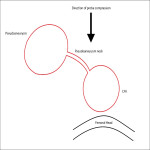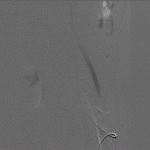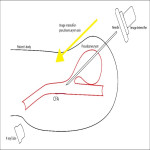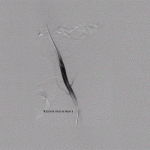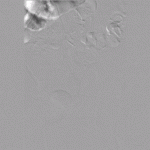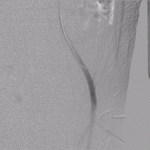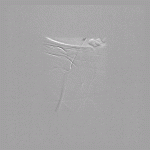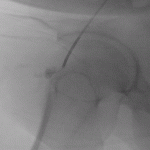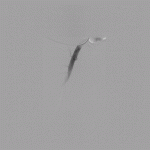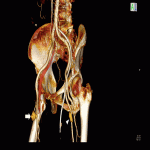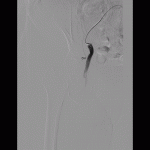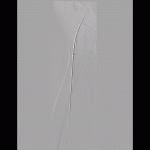Purpose
Femoral artery pseudoaneurysm is an important post-procedural complication following percutaneous access/intervention. Whilst it is uncommon, it causes significant anxiety among clinicians including interventionists as it exposes the clinician to litigation concerns.
The management of post-percutaneous access pseudoaneurysm can divided into several broad categories; namely conservative, endovascular or surgical managements. With rapid advancements of endovascular techniques, interventional radiologists has been at the forefront of managing this issue.
We aim to highlight; with the aid of a cases series, the various weaponries at the disposal of an...
Methods and materials
A series of four clinical cases is used to illustrate five; amongst the varying, techniques of post-percutaneous access pseudoaneurysm closure. The techniques described are as follow:
Ultrasound guided compression
Vascular closure device
Endovascular embolization
Endovascular stenting
Percutaneous injection
Results
1) Ultrasound guided compression:
60 year-old lady with underlying diabetes and hypertension presented with non-healing infected 5th toe ulcer. She was referred to interventional radiology for lower limb angioplasty to aid the healing of her wound.
An antegrade puncture approach was made to obtain access to the right common femoral artery (CFA). Following uneventful plain old balloon angioplasty (POBA), arterial sheath was removed followed by 15 minutes manual compression. No immediate haematoma observed post-compression.
However a small pulsatile haematoma was detected during routine next day...
Conclusion
Management of iatrogenic pseudoaneurysm is multifaceted, with ever evolving techniques. Incidences remain thankfully low; but will perhaps be increasing with advancement of interventional radiology.
Personal information and conflict of interest
A. A. Halim Lim:
Nothing to disclose
R. Zakaria:
Nothing to disclose
N. Y. Yaacob:
Nothing to disclose
References
1. Schaub, F., Theiss, W., Busch, R., Heinz, M., Paschalidis, M., & Schömig, A. (1997). Management of 219 consecutive cases of postcatheterization pseudoaneurysm. Journal of the American College of Cardiology,30(3), 670-675.
2. Stone, P. A., Campbell, J. E., & AbuRahma, A. F. (2014). Femoral pseudoaneurysms after percutaneous access. Journal of Vascular Surgery,60(5), 1359-1366.

